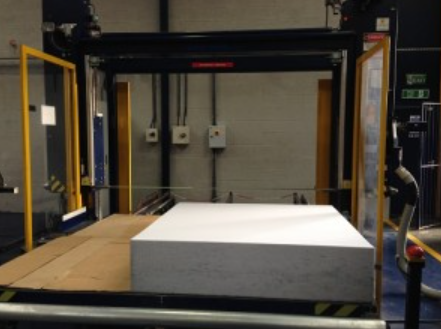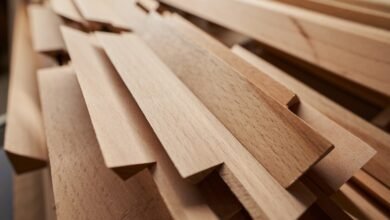Foam Conversion: Unlocking Bespoke Acoustics for Modern Industry Solutions

Introduction
Foam conversion is a transformative process that takes raw foam materials and shapes them into highly specialized products tailored to exact customer requirements. Far beyond simple cutting or shaping, foam conversion leverages advanced machinery and expertise to deliver bespoke acoustics solutions designed for diverse industrial applications. Whether it’s slitting foam sheets to precise thicknesses or using CNC profiling to create custom acoustic panels, the foam conversion process is the backbone of many innovative noise control and insulation products.
In today’s fast-evolving markets, from automotive manufacturing to marine vessels, the demand for tailored acoustic solutions is soaring. Foam conversion enables companies to not just meet but exceed these demands by producing components that provide superior sound absorption, thermal insulation, and ergonomic comfort. This article explores the world of foam conversion, its techniques, applications, and the significant benefits it brings to industries needing cutting-edge acoustic materials.
What is Foam Conversion?
At its core, foam conversion involves processing raw foam into finished products or components suited for specific functions. Foam itself comes in various types—such as polyurethane, polystyrene, and polyethylene—each offering unique properties like flexibility, durability, or moisture resistance.
The conversion process can include:
- Cutting: Using tools like band saws, water jets, and die-cut presses, foam is shaped into custom sizes and forms.
- Profiling: CNC machines create intricate acoustic designs tailored to absorb specific sound frequencies.
- Laminating: Multiple foam layers or foam bonded to other materials enhance product performance.
- Moulding and Fabrication: Foam is formed and combined with other materials to build functional parts like cushions, insulation panels, or machinery enclosures.
This versatility makes foam conversion an indispensable part of producing bespoke acoustic products designed to manage sound, vibration, and thermal transfer effectively.
Advanced Foam Conversion Technologies at Acoustafoam
Leading foam converters like Acoustafoam utilize a range of modern equipment to deliver precision and quality. Their capabilities include:
- Band Saws and Profiled Slitters: For clean, accurate cutting of foam sheets into uniform thicknesses or custom shapes.
- CNC Profiling Machines: For detailed, technical acoustic foam solutions tailored to client specifications.
- Water Jets: To cut foam with minimal waste and excellent edge finish.
- Laminators and Spray Booths: For combining materials and adding functional coatings.
- Die Cut Presses: For high-volume production of foam parts with consistent dimensions.
With decades of expertise and these tools, Acoustafoam transforms standard foam into technical acoustic solutions that address unique challenges—from soundproofing construction vehicles to insulating yacht engine rooms.
See also: How a Smart PPC Strategy Helps Your Business Stand Out in Dubai
Applications of Foam Conversion and Bespoke Acoustics
The industries benefitting from foam conversion are wide-ranging. Some notable sectors include:
1. Automotive Industry
Foam conversion produces first and second-tier components like interior padding, headrests, armrests, and acoustic liners. These contribute to quieter, more comfortable vehicle cabins, enhancing the driving experience.
2. Construction Sector
Custom acoustic foam panels and insulation materials reduce noise pollution on building sites and improve the soundproofing of construction vehicles. Thermal insulation products also help with energy efficiency in buildings.
3. HVAC Systems
Heating, ventilation, and air conditioning systems require foam products that can minimize sound transmission while maintaining airflow efficiency. Foam conversion enables creation of such technically demanding components.
4. Marine and Boats
Soundproofing and thermal insulation are vital in marine applications. Acoustic foams developed through conversion processes are tailored to withstand moisture and vibration in boats and yachts.
5. Medical and Healthcare
Medical foam products such as orthopaedic supports, cushions, and specialty padding are manufactured through precise foam conversion techniques to meet stringent safety and comfort standards.
6. Industrial and Machinery Enclosures
Foam is used to build enclosures that contain noise generated by heavy machinery, protecting workers and reducing sound pollution in factories.
7. Public Transport and Rail
Custom foam products improve passenger comfort and reduce noise in buses, trains, and other public transport vehicles.
Benefits of Foam Conversion and Bespoke Acoustics
Tailored Solutions for Complex Problems
Unlike off-the-shelf products, foam conversion allows for bespoke acoustic solutions engineered to fit unique spaces and address specific noise control or insulation challenges.
Enhanced Product Performance
Combining foam types, densities, and profiles through conversion processes results in superior sound absorption and thermal properties optimized for the intended application.
Versatility Across Industries
Foam conversion supports many sectors, allowing companies to design components that fit exact size, shape, and functional requirements.
Rapid Prototyping and Sampling
Manufacturers like Acoustafoam provide sampling and rapid prototyping services that enable clients to test and refine materials before full-scale production.
Quality and Compliance
With rigorous quality control systems and ISO 9001:2015 certification, foam conversion companies ensure products meet industry standards and customer expectations.
Environmental Responsibility
Some foam conversion processes incorporate eco-friendly or recycled materials, reducing environmental impact while maintaining high product quality.
Why Choose Experts Like Acoustafoam?
Established in 1979, Acoustafoam has over 40 years of experience in foam conversion and acoustic solutions. Their family-run approach and commitment to innovation have made them a trusted supplier across Europe and beyond.
They combine traditional craftsmanship with cutting-edge technology, maintaining a fully integrated process—from material sourcing and CNC machining to prototyping and customer support. Their knowledge of diverse materials and sectors allows them to develop highly customized acoustic foams that outperform generic alternatives.
Moreover, Acoustafoam’s extensive sector experience—ranging from automotive and construction to marine and medical—ensures they understand the unique challenges faced by each client. They offer not only products but partnership, helping businesses innovate and solve problems that require more than standard solutions.
Conclusion
Foam conversion is much more than a manufacturing step; it’s a gateway to creating bespoke acoustic solutions that meet today’s demanding industrial and commercial needs. From precision cutting and profiling to lamination and moulding, the foam conversion process unlocks the full potential of foam materials, allowing companies to tailor products for enhanced sound control, thermal insulation, and comfort.
Industries such as automotive, construction, marine, and healthcare benefit immensely from the flexibility and performance offered by converted foam components. Leading manufacturers like Acoustafoam demonstrate how expertise combined with advanced technology results in innovative acoustic products that provide measurable improvements in noise reduction and insulation.
For businesses seeking reliable, high-quality acoustic solutions tailored to their unique requirements, foam conversion represents the future of noise management and material innovation.





